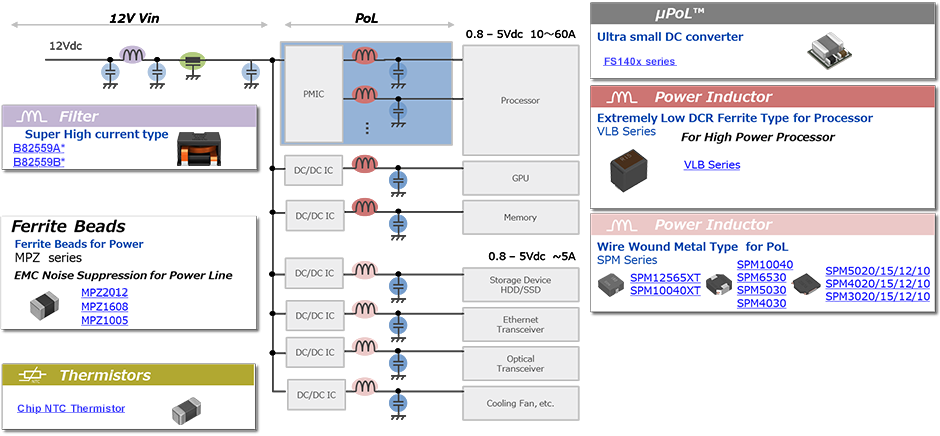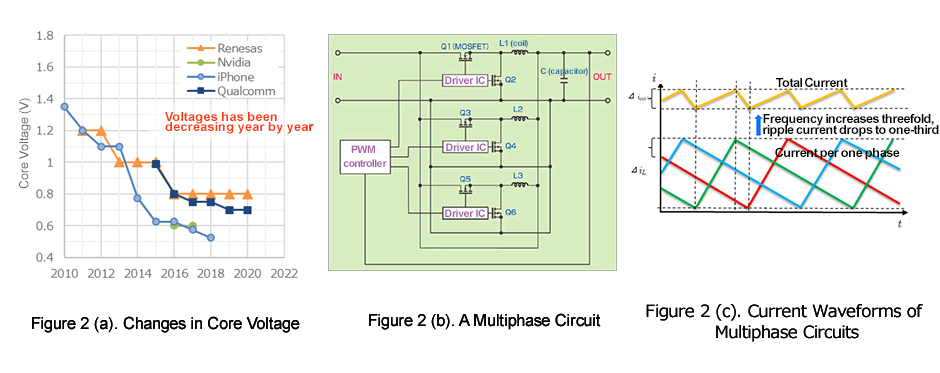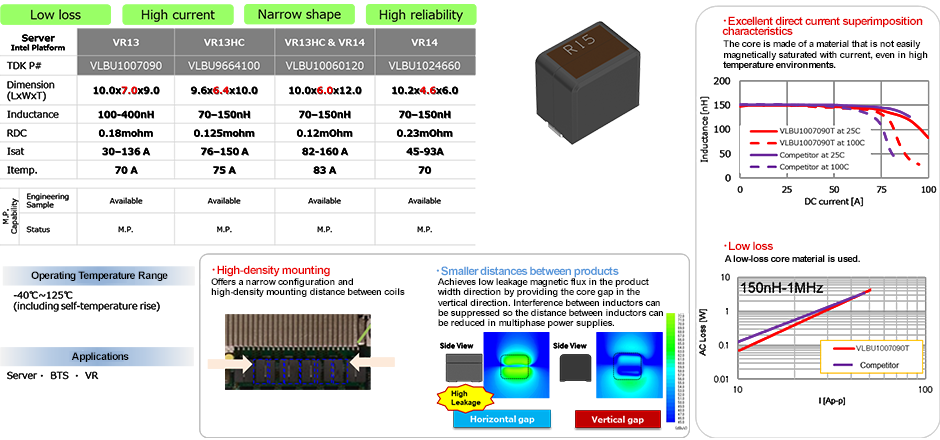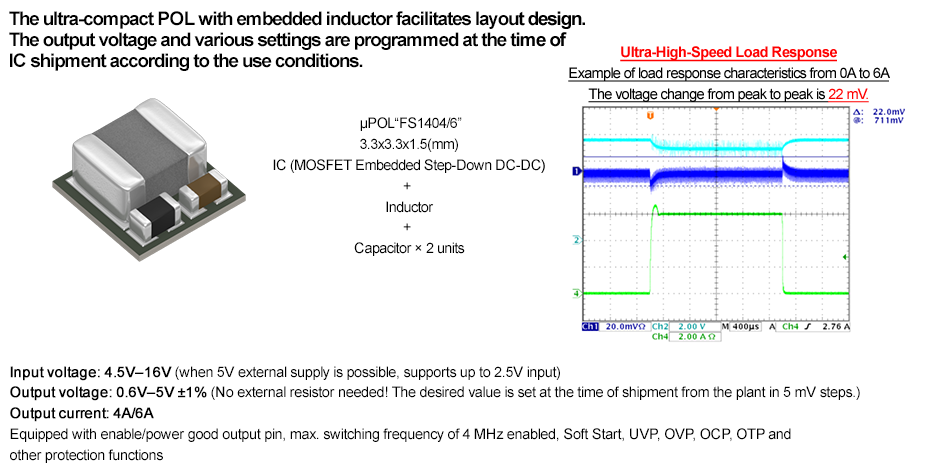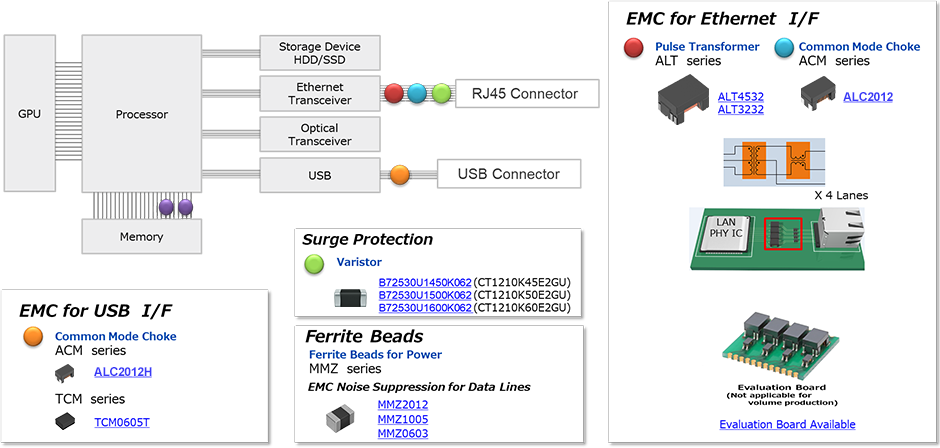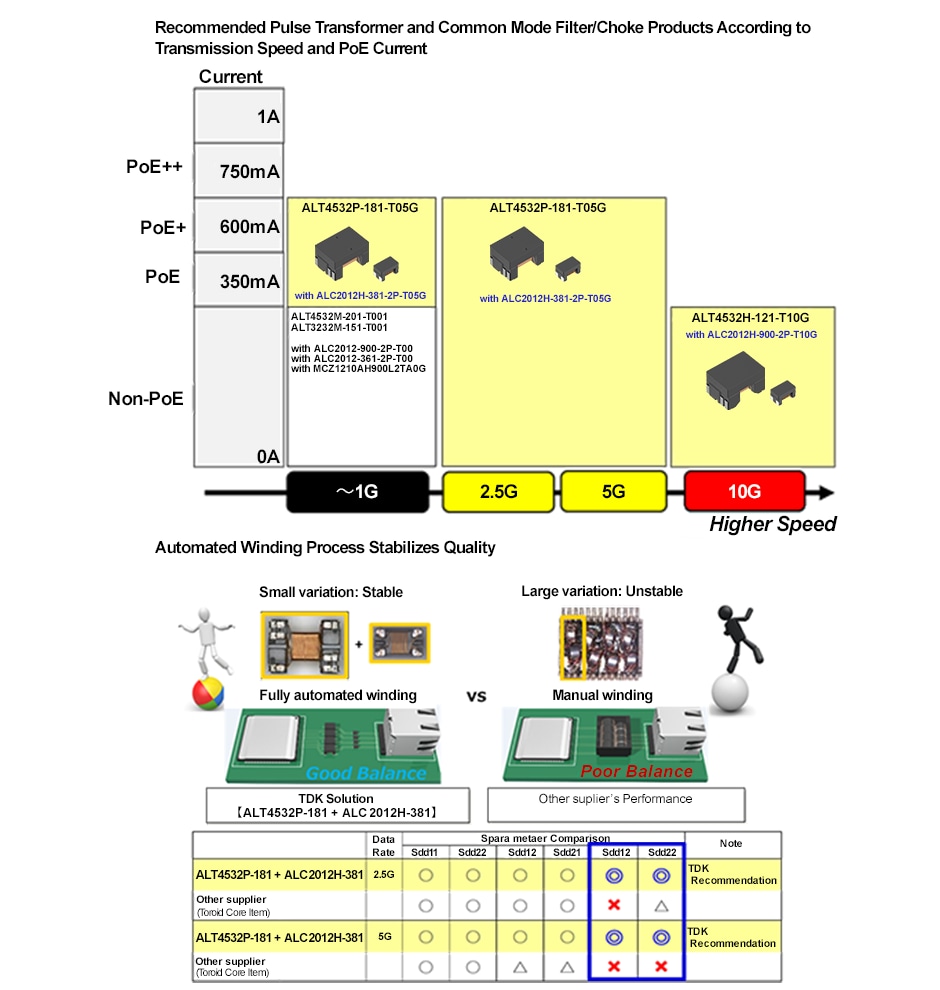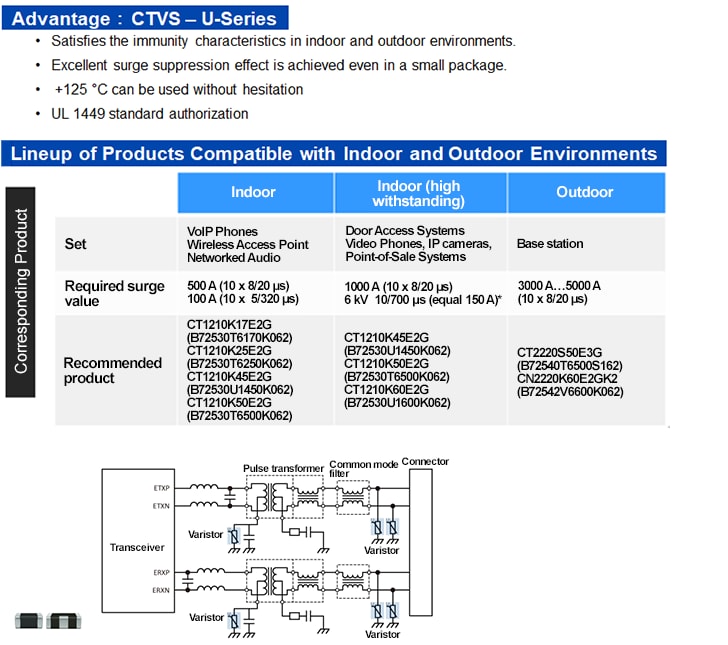Server Power Supply Circuit Products and Data Line Products

In addition, technologies are evolving, exemplified by AI, and a digital transformation (DX) is taking place as a result of the use of big data and the internet of things (IoT). To support these advances, however, large numbers of high-performance servers that can process large volumes of data will be needed. In conjunction with the increased performance of processors and various types of ICs, higher clock speeds of power supply ICs on server boards, high current power saving, miniaturization, noise countermeasures in data lines, and surge countermeasures have become urgent issues. Here, we introduce TDK products for addressing and solving these problems including the VLBU series of ferrite power inductors compatible with the high-efficiency needs of VR13 and VR14 applications, the FS series of DC-DC converters with embedded μPOL™, solutions using the ALT series of pulse transformers and ALC series of common mode filters and chokes, and chip varistors and ceramic transient voltage suppressors used for surge protection.
Contents
- Power Supply Circuit Blocks and TDK’s Product Lineup
- Voltage Regulator Modules (VRM) for Driving Processors
Core Voltage and Multiphase Circuit
The VLBU Series of Ferrite Power Inductors Compatible with the High-Efficiency Conditions needed for VR13 and VR14 Applications and their Features
FS Series of DC-DC Converters with Embedded μPOL™ and its Features - Data Line Circuit Blocks and TDK’s Product Lineup
Solutions Using the ALT Series of Pulse Transformers & ACM Series of Common Mode Filters/Chokes
Surge Protection Devices: Chip Varistors and Ceramic Transient Voltage Suppressors - Contact Information
- Related Links
Power Supply Circuit Blocks and TDK’s Product Lineup
Voltage Regulator Modules (VRM) for Driving Processors
The CPU board power supply converts AC voltage to DC voltage using a front-end power supply unit and supplies DC 12V, 5V, and 3.3V to the motherboard. Current CPU operating voltages are 1.5V and lower, and the voltage supplied by the front-end unit is not suitable. Consequently, a voltage regulator module (VRM) is used to convert the DC 12V power to the voltage used by the CPU. CPU power supply voltage has been decreasing year by year in order to achieve low power consumption and high operating speeds (Figure 2 (a)), and as the voltage decreases, the allowable voltage fluctuation value becomes smaller (with a 5% tolerance in output voltage, at 1V the tolerance is 50 mV, but at 0.8V the tolerance is 40 mV), and a VRM is necessary to support fast transient response. If the current exceeds 50A, it is difficult to achieve this with a single DC-DC converter, and a multiphase circuit (Figures 2 (b) and 2 (c)) are used with a high-current VRM.
The conditions for the power inductor used in such a circuit are low inductance, high current, space saving, and low loss, and the VLBU series (Table 1) is suitable.
The VLBU series satisfy the high-efficiency conditions needed for VR13 and VR14 applications.
In addition, TDK provides support for simple layout design using the ultra-compact POL with embedded ICs.
The output voltage and various settings can be programmed at the time of IC shipment according to the use conditions. Please inquire for details.
Data Line Circuit Blocks and TDK’s Product Lineup
Wired LANs are used with cable connections, and Ethernet is currently used as the standard.
Data volumes are growing year by year, and transmission speeds are increasing to 100MbE, 1GbE, and 10GbE. There is also a trend toward mounting multiple pulse transformers on a single board, and there is a need for small sizes. In the current pulse transformer market, toroidal configuration products account for the majority of products, but TDK uses original structural designs to create SMD type products that are compatible with automated mounting. In addition, an automated winding process is used in production, contributing to stable quality.
Surge protection device
Since a wired LAN uses a cable, an ESD failure may occur when connecting or disconnecting the connector, or a surge voltage may be applied to the data line due to a power surge, lightning strike, etc., and the IC may be damaged. As a countermeasure, a protective element is placed for each input / output pin to reduce surge. The chip varistor is smaller than other protective elements and has excellent surge suppression characteristics.
Contact Information
Related Links
Selection Guide
- Selection Guide
- Inductors for Power Circuits (Commercial Grade)
- Selection Guide
- Integrated version : Signal Line Common Mode Filters/Chokes, ESD Protection Devices(Commercial Grade)
- Selection Guide
- Signal Line Common Mode Filters/Chokes (Commercial Grade)
- Selection Guide
- ESD Protection Devices (Commercial Grade)
- Selection Guide
- Chip NTC Thermistors

